Tabula Rasa Review
Tabula Rasa
Six years in the making, is this really a Tabula Rasa for the MMO genre?
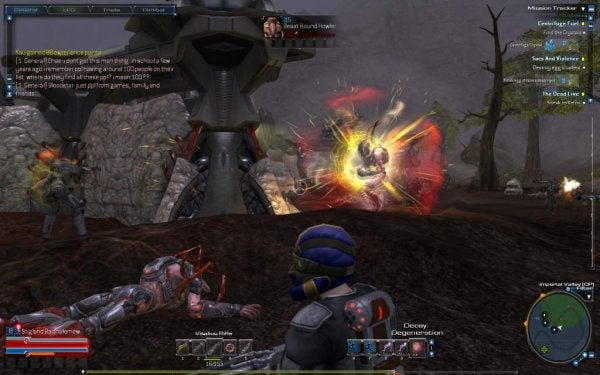
Verdict
Key Specifications
- Review Price: £17.98
”’Platform: PC”’
Tabula Rasa, clean slate; it was supposed to be a new beginning, both for the man behind Ultima, Richard Garriott, and for the Massive Multiplayer Online genre he had, with Ultima Online, helped create. Garriott belived Tabula Rasa was a game that could push the MMO beyond the concepts and mechanisms pioneered in UO and EverQuest. He promised a more dynamic world of rich storylines and real moral choices; a world that would show the same depth of character and attention to detail he had ploughed into Ultima through the years. It’s taken him and the team at Destination Games over six years to bring that vision to life. Is it everything we (and he) might have hoped for?
Well, Tabula Rasa certainly isn’t your average MMO. The easiest way to describe it is that it’s the closest we’ve come to a massive multiplayer version of Halo, taking as much from offline 3D shooters as it does from online RPGs. As with Halo, it centres on a grand conflict between humanity and a conquering alien force known only as The Bane. At the opening, it’s explained that The Bane have wiped out Earth and most of humanity. Luckily, more generous alien powers have been at work for centuries, hiding extra-terrestrial technology and giving humanity the chance to fight back on distant worlds in distant galaxies. The player is a raw recruit in this sci-fi war, but one with an added strength. Thanks to alien tampering generations ago, the player is a receptive – able to find and then wield strange powers through the discovery of alien lore, or logos. Build your fighting capabilities and gather all the logos you can find, and you might just play a decisive role in the ongoing battle for humanity’s survival.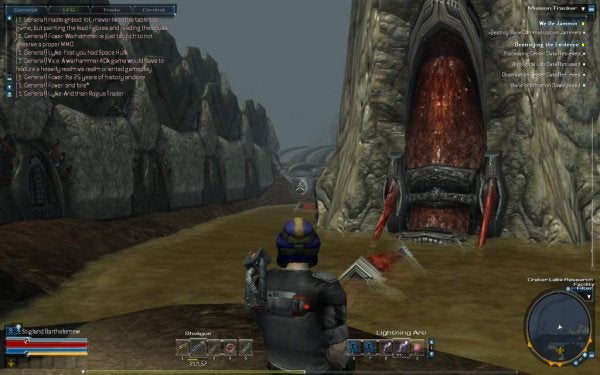
And the battle is the thing here, because Tabula Rasa employs a real-time 3D combat system that owes as much to FPS games as it does to the likes of EverQuest. For 90% of the game you’ll control your character in third-person using the same keyboard and mouse system you would use in a regular 3D shooter. You can aim at enemies, make some use of cover and target area-affect weapons in the knowledge that you’ll hit what you expect to, not what some weird, arbitrary game mechanic decides. Of course, there is a little old-school simulated dice rolling going on in the background – your chances of hitting and the damage you do are affected by your skills, the statistics of the weapon used and various environmental factors – but Tabula Rasa’s fighting is a lot more immediate than most MMO combat systems, which still rely on the same recharging abilities, skills and well-timed hotkey presses.
As a result, it will make sense to anyone who has played an FPS. You know a rifle is more accurate than a pistol, that a shotgun does more damage but only at close range, and so it proves true in the game. The approach is intuitive and takes a lot of the guesswork out of the action. If a beast or a Bane warrior looks big and menacing, then you know it’s going to pack quite a wallop. Grunts, meanwhile, can be taken down with a few shots once you’ve levelled up a few times. If you have ever had your sorry behind handed to you by an unimposing bunch of giant rats in a traditional fantasy MMO, you’ll know exactly why this feels good.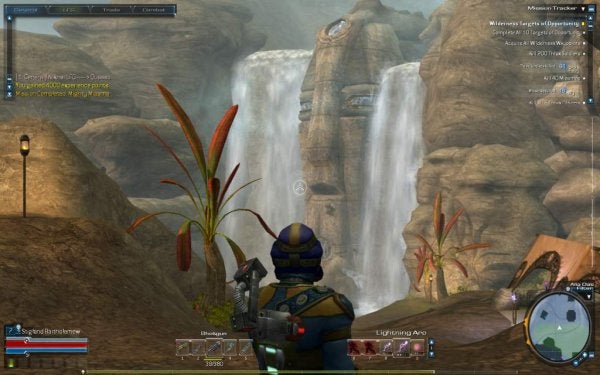
Logos powers are important too, filling in a similar function to spells in a conventional fantasy MMO, but carefully designed so that they work with the real-time combat to help you fit various offensive, defensive or support roles. Softening up a squad of Thrax Infantry with lightning makes it much easier to take them down up close with the shotgun, while various health-restoring, weapons specialisation and special attack skills come online as you progress through the levels, depending on the career path that you choose.
Here, too, Garriott and his team have played clever. Every new recruit to Tabula Rasa starts off – appropriately – as a clean slate, with no predestined class or capabilities. You can upgrade the same basic set of skills while you ascend through the first four levels of character development, but at level 5 you’re expected to choose to become either a soldier (your basic warrior) or a specialist (the TR equivalent of support and sorcery roles). 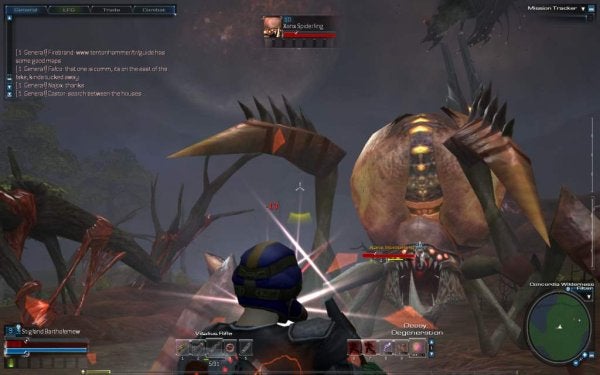
At level 15 you then make a further selection. Soldiers choose to be a hard-hitting commando or a more stealthy ranger, while specialists decide whether they want to be a sapper or a biotechnician. Finally, at level 25 you can take your choice one stage further, picking a master class such as sniper or the vaguely necromancer-like exobiologist. The clever thing about all this is that, not only can you make up your mind about the sort of character you want to play as you go along, you can also use a system of clone credits to clone your character before each ‘tier’ of selection. If you get bored of playing a commando at level 20 and want to be a ranger, you just hook up your clone character and get playing, without needing to go back and play through the first 14 levels full of content first.
All in all, there’s a lot to recommend Garriott’s world. It has atmosphere – with a war going on, all the players know exactly what they’re there for, and everyone seems happy to much in, blasting Bane troops that are pounding on weaker characters, aiding in the completion of tricky newbie quests as they pass by, and generally getting stuck in. To help this, the game even features periodic raids by allied forces on Bane control points and visa versa, during which everyone in the area rallies to the call so that they can collect the appropriate defence or offense tokens and so complete their own mission objectives. These raids are little fiestas of gunfire and carnage, and the game comes very close to realising its vision of an epic sci-fi conflict. It also helps that TR features some strong storylines, and that the instanced quests – the ones where the game creates a special version of a combat-heavy area for you and any squad-mates to enjoy – are set up beforehand by cool little cut-scenes. 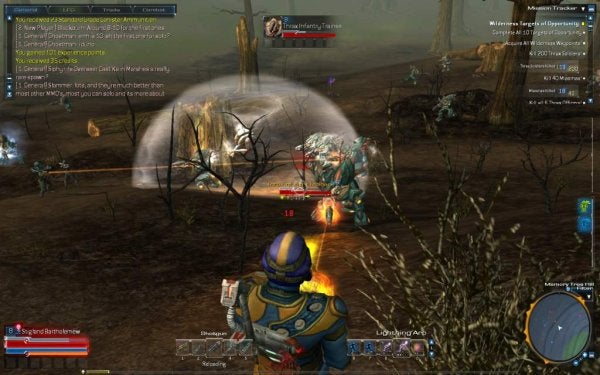
Most of all, it’s nice to see some enemies with real character and backbone. After years of slaying rats, wolves and sprites in the early stages of an MMO, battling the sinister Bane forces is a real change for the better. The different classes of troops are almost Halo-like in their clear delineation, though it has to be said that the AI – while a cut above most standard MMOs – isn’t up there at the level of Bungie’s classic.
Meanwhile, hurrah for an MMO with a sensible system of teleports and waypoints, saving you the endless backtracking between quests and quest-givers that seems to be part and parcel of the genre. Hurrah too for a sensible attitude to death that doesn’t make your life miserable every time you wander into a Bane-heavy area or take on someone who’s too big for your current blaster.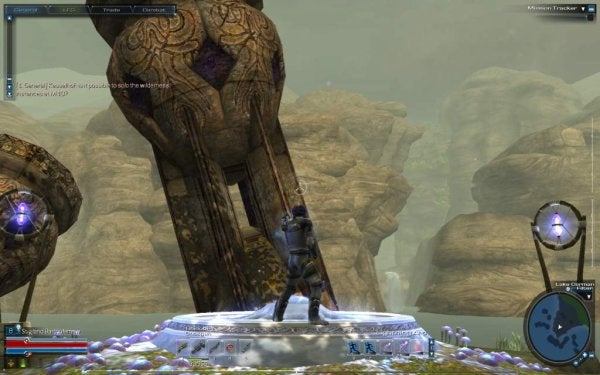
However, there’s a whole host of ways in which Tabula Rasa isn’t as revolutionary as we might have hoped. A lot of the basic questing structure is tired; we’ve all done the bit where you build skills and experience, the bit where the world opens up and the bit where you go on to explore new areas before, and we’ve all done a million quests where you kill 12 of this and collect 6 of that, or where you have to find the lost brother/sister/cousin or check out an enemy outpost up the river.
It’s not that Tabula Rasa does it any worse than WoW, Vanguard or LoTRO – it’s just that it doesn’t really do it any better, at least in the early stages of the game. I think the subplots and missions miss out on some of the personality and humour you find in WoW or LoTRO, and around level 9 I could feel a grind developing. This is still a huge improvement on the pre-WoW days, when the grind used to kick in straight away, but it’s still a disappointment. On the plus side, Tabula Rasa does score highly for the sheer quantity and choice of its missions, so at least you’re rarely stuck on one dull collect-a-thon for long.
It also has to be said that while the game overall is very solo friendly, particularly as other players are usually happy to help you out while passing through, the instanced quests, where you’re basically on your own or with a pre-made group, are very tough on the lone player unless you’re of a high enough level. Sadly, you won’t find that out until you try them. In my experience, it’s not as easy as it is in, say, Guild Wars, to find a pick-up group to do such a quest with, and Tabula Rasa doesn’t have that game’s AI heroes or allies to help you through. 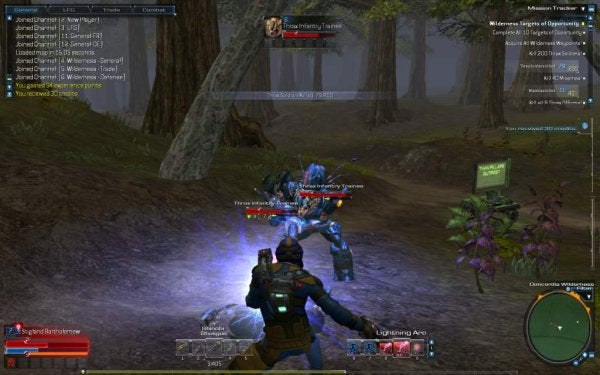
This isn’t a disaster by any means, but it contributes to the feeling I get that Tabula Rasa was designed to change the MMO world in the era before WoW, but now we’ve had WoW, LoTRO and Guild Wars, a lot of its innovations seem less inspired. The real-time combat is brilliant, no doubt about it, but TR still feels like the sort of game that hardened MMO players will know and love, but the casual crowd will get annoyed or confused by. Crafting, for example, is barely explained and a hassle, while the mechanics of finding and joining a group aren’t made a key part of the early stages in the way that they are in WoW and Guild Wars.
You can see that features like the raids, which actively change the status of areas of the map, are designed to create the impression of a dynamic, constantly evolving battlefield, but while it’s impressive to see Bane forces drop-shipped in, Halo style, rather than simply wandering aimlessly around, the overall effect isn’t quite there. The moral choices, meanwhile, don’t have as much impact on the game as you might anticipate. Take the drug-run mission or turn the dealer in? Arrest the alien peacenik or let him escape unharmed? Either way, it doesn’t really seem to matter. All in all, the world still feels a little artificial.
The slightly dated impression isn’t helped by the visuals. By MMO standards, Tabula Rasa looks fine, but even on maximum settings it didn’t give my Core 2 Quad 6850/Geforce 8800 Ultra system much eye candy to chew on, and – bar a few nice water effects – it’s comfortably behind LoTRO and Vanguard in the graphics stakes. For a game with so much woodland, the trees look primitive, and while the character models and the various Bane baddies are nicely rendered, the surfaces don’t have the detail or sheen we expect in the post-Half Life 2 era, let alone the post-Bioshock and Gears of War one. Had Tabula Rasa shipped at the same time as WoW we might have been impressed, but long after WoW and Guild Wars, and with Age of Conan coming soon, it’s a game distinguished by some good art and some fine production design, but let down by average graphics.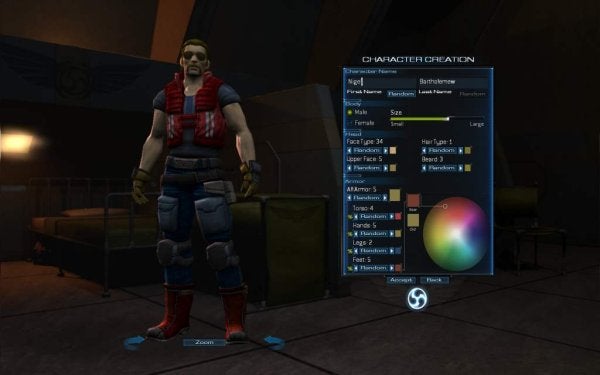
Now, I’m going to throw in my usual caveats about MMOs right now. My play has been confined to the beginning and early intermediate stages of the game, I haven’t really got involved with squads and organisations, and Tabula Rasa is a game that’s still undergoing a lot of reworking and expansion (though it has been released in a decent working state). Reports from long-term players are that the game gets better and better as time goes on.
Still, I’m not really a ‘jam tomorrow’ kind of guy. For me, Tabula Rasa is a game with some exceptional strengths – notably the very immediate feel of the combat – but one that still feels too close to what has gone before. I don’t know who will take the MMO to its next stage or how they will do it, but while Tabula Rasa hints at a way forward, it doesn’t quite stride boldly down it. It’s good a good game, but not a revelation, and at the moment I’m not enjoying it as much as I enjoyed WoW, LoTRO or Guild Wars in the past. This might change – and I’m planning to keep hacking away and see whether it does – but for now Tabula Rasa leaves me asking: why wipe the slate clean just to fill it up with the same old stuff?
”’Verdict”’
A strong MMO with an interesting mix of classic RPG mechanics and real-time 3D combat. The quest structure, however, still feels tied to the past, while rival games offer more immediate enjoyment.

